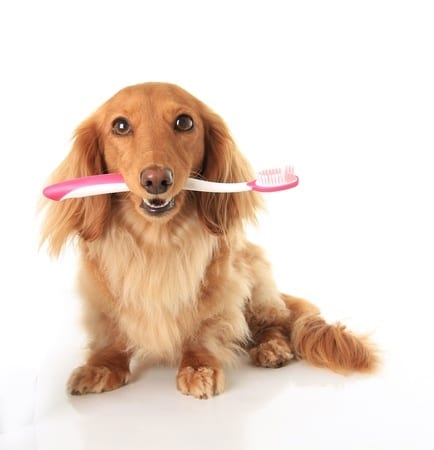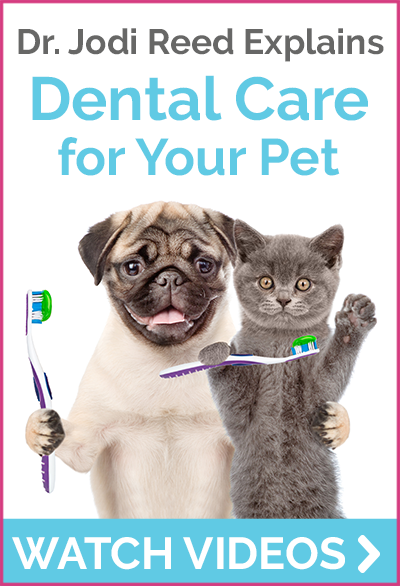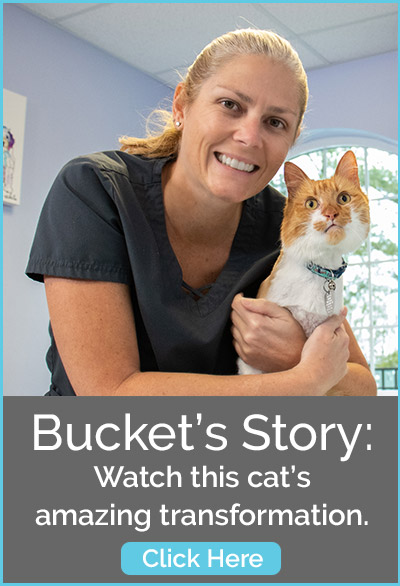Pet Broken Tooth Restoration
Bonded Sealants and Composite Tooth Restorations
 Just like humans, pets need dental care to help them live longer, healthier lives. Home care, as well as regular professional oral health and treatment under anesthesia, should always be part of your pet’s ongoing health care. This not only keeps their teeth and gums in good health, but it can also alert your vet of diseased teeth, oral tumors, and other serious problems developing in your pet’s mouth.
Just like humans, pets need dental care to help them live longer, healthier lives. Home care, as well as regular professional oral health and treatment under anesthesia, should always be part of your pet’s ongoing health care. This not only keeps their teeth and gums in good health, but it can also alert your vet of diseased teeth, oral tumors, and other serious problems developing in your pet’s mouth.
Sometimes, during a routine examination, we may notice a fractured (broken) tooth or a cavity. Left untreated, fractured or decaying teeth will lead to oral pain and tooth root infections, so they will always require treatment dependent on the severity of the fracture or cavity. Typically a broken or diseased tooth should be treated one of three ways: a bonded sealant +/- crown restoration, a root canal, or an extraction.
If your pet does have a broken or diseased tooth, we will recommend investigating the health and viability of the tooth before making a treatment plan. Along with the oral exam, a dental radiograph of any abnormal tooth is a critical step in the decision-making process and is absolutely necessary to make the right treatment plan. Since two-thirds of the tooth is unseen below the gum line, dental x-rays also help identify unknown, hidden problems not evident on oral exams.
Broken Teeth
While any tooth can become fractured from trauma, the most commonly broken teeth in dogs and cats are the canines and the large maxillary (upper) 4th premolars. The canine teeth are the teeth that receive the most pressure when grabbing and tearing things, while the upper 4th premolars are the primary teeth pets use to crunch bones or chew on things.
Due to the high risk of fracturing your dog’s teeth, we do not recommend allowing your pet to chew on hard plastic Nylon bones, rocks, antlers, bull horns, hard sticks, and knuckle bones. The general rule for a safe chew toy or treat is that you should be able to make an impression on the object with your thumbnail. You should always think about how your own teeth might be damaged by anything you are about to give your dog. We are typically smart enough not to chew on hard objects or bite down with great force on things because we are aware of what could happen. This is not true for our pets.
If a fractured tooth has apparent pulp exposure (a small hole in the crown of the tooth that communicates with the inside part of the tooth where the blood vessels and nerves live), there are only two options for treatment: extract the tooth or perform a root canal as an attempt to save the tooth. If the fracture of a tooth only involves the enamel and dentin without involving the pulp chamber, these teeth will need a bonded sealant and possible composite restoration to repair the tooth.
Bonded Sealants
If a tooth fracture does not involve the pulp chamber, the tooth does not have extensive periodontal disease, the tooth is confirmed to be vital (alive), and there is no evidence of a tooth root abscess or fracture on dental radiographs, then the broken tooth is considered a good candidate for a bonded sealant.
Enamel is the hardest substance in our and our pets’ bodies and is the part of the tooth that covers the crown. The crown is the part of the tooth above the gum line and the part of the tooth we can see. Enamel protects the tooth by covering up the sensitive dentin that contains fluid-filled tubules that communicate directly with the tooth’s pulp chamber. If the enamel is damaged or missing, the exposed dentin transmits pain and infection to the nerve inside the tooth.
If you have ever eaten something really hot or cold and felt pain in your mouth, this very uncomfortable sensation is likely caused by exposed dentin due to enamel wearing or a fractured tooth. Pets that have exposed dentin also feel the same painful sensation. The only difference is that they just don’t communicate that to you in obvious ways. If left untreated, the pain worsens and the tooth becomes infected, leading to the pain and expense of a necessary extraction or root canal.
Bonded sealants are performed with a series of steps to smooth the rough edges of the fractured enamel to reduce tartar accumulation, etching the surface of the fracture with an acid gel, and filling in the little tubules (micro-holes) with the dentin so that sensitivity and pain of that tooth is no longer an issue and help prevent bacteria from migrating through the tubules and finding their way into the pulp chamber. Without properly covering the fracture site, bacteria and food particles will easily get into the pulp chamber, and a painful tooth root infection will develop.
Composite Tooth Restorations
Crown therapy is a common treatment in human dentistry, where the cosmetic appearance of our teeth is very important. While any fractured tooth can have crown therapy, these procedures are complicated, costly, and not always effective due to high bite forces in animals; therefore, crown therapy is not recommended or performed very commonly in companion animal dentistry. For working dogs, whose teeth are essential to their job, these more advanced dental therapies are more likely to be recommended.
There are two types of tooth restoration: partial and complete. Partial restorations are useful for teeth that don’t receive a lot of pressure when eating or are only partially chipped. Full or complete restorations require a crown. Here at Harmony Animal Hospital, we are equipped to perform partial crown restorations. However, if a full crown is recommended or required to save a tooth, this more complicated procedure will be referred to a local board-certified veterinary dentist.
Crowns are often used following a root canal (another procedure we refer out to a boarded veterinary dentist), as this is the only effective way to protect a tooth after receiving endodontic therapy. Although porcelain crowns are common in human dentistry, they are usually too fragile for pets. Instead, most animals will receive a crown made of composite resin. The crown’s interior is often lined with metal to increase its resistance further.
Although cavities are rare in animals, they do occur. These should be addressed during your pet’s annual dental cleaning with a complete oral exam, as untreated cavities can lead to infection or loss of the tooth later on. Most cavities are filled using a composite resin, which we can treat here at Harmony Animal Hospital.






